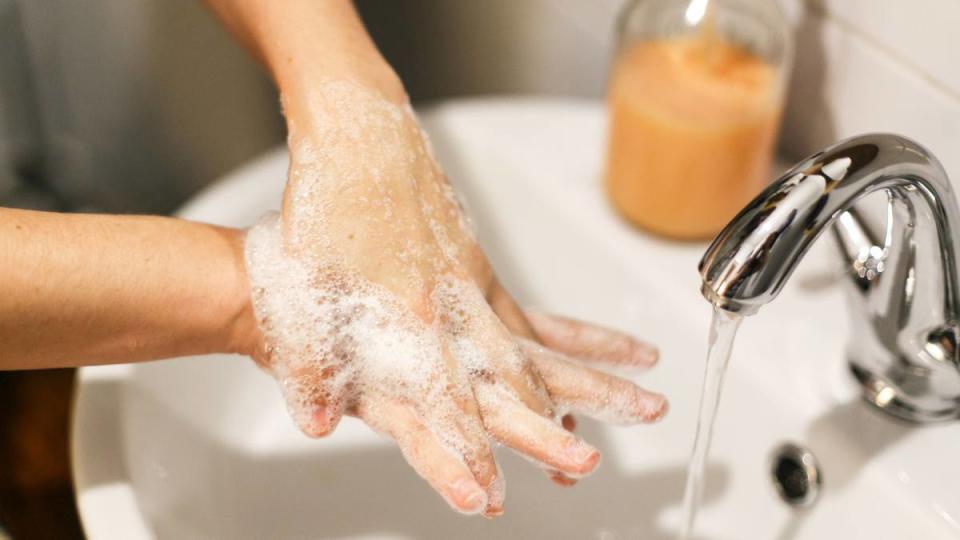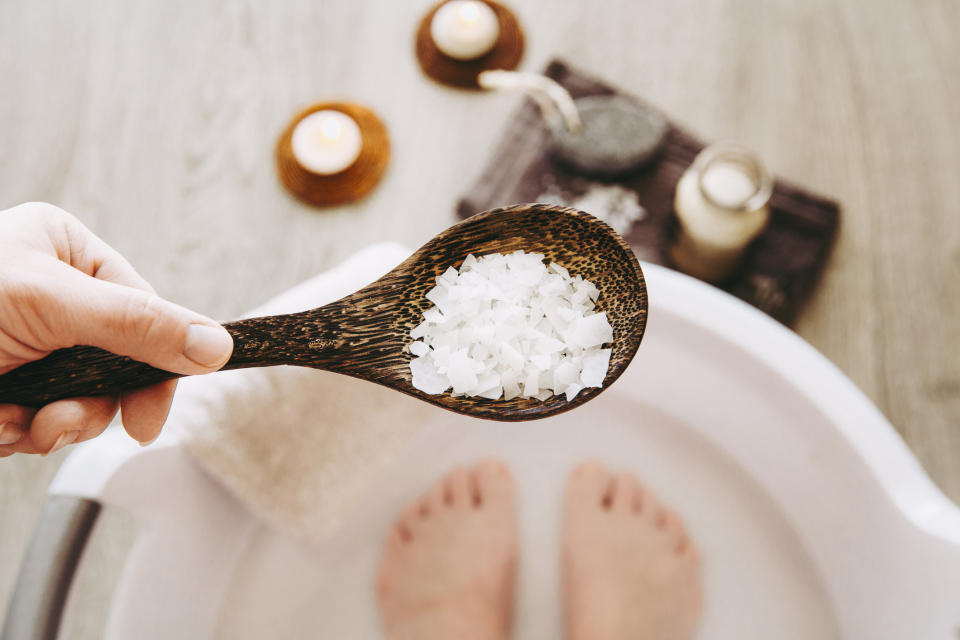How to Get a Splinter Out Without Tweezers: 5 Easy Tricks That Make It Painless
Picture this: You're enjoying the weather outside on the porch when you brush up against a piece of wood and suddenly feel a sharp pain. You look down to see a stinging sliver of wood lodged underneath your skin. Ouch! If you’ve ever had a splinter, you know that feeling. Many people might immediately look for a pair of tweezers in hopes of being able to just pluck the splinter right out, but that’s not necessarily the best (or only) option. The splinter might be embedded too deeply for tweezers to grab it, you might not have a pair handy, or you might just prefer a method that doesn’t require digging with a sharp tool. Thankfully, you can figure out how to get a splinter out without tweezers using simple household products you probably already have stashed in your home.
Carolina Goncalves, superintendent pharmacist at UK-based online pharmacy Pharmica, emphasizes the importance of targeting the splinter as quickly as possible to best reduce the risk of infection. After all, a foreign object has punctured your skin, which is the protective barrier against bacteria.
“Splinters tend to work their way deeper into the skin over time. This can not only exacerbate the discomfort experienced but also increase the complexity of the removal process,” says Goncalves. “As the splinter burrows deeper, it becomes more difficult to access and extract safely, potentially requiring more invasive procedures.”
Related: Prevent Cuts and Splinters by Picking Up Slivers of Shattered Glass With Bread
How to get a splinter out without tweezers
1. Disinfect the area and any products you plan to use
The first step should always be to clean the affected area and ensure everything you are using to tackle the splinter is completely disinfected.
“They best way to start treatment is to initially clean the area by washing hands with soap and water,” says Kellie Reed, MD, board-certified dermatologist with Westlake Dermatology. “Clean the area with rubbing alcohol on a cotton pad and be sure to clean any tools such as tweezers well with rubbing alcohol as well.”

2. Try using these 5 items to remove the splinter
Have tape?
Tape adhesive can work to remove the splinter. Reed suggests placing the tape over the area with the splinter, pressing down gently, and slowly pulling it off in the opposite direction of the way the splinter entered the skin. If the tape is sticky enough and the splinter is positioned so that it can attach to the adhesive, this method can help pull the sliver out of the skin.
“If the splinter is embedded in an area with thicker skin, such as the soles of the feet, then consider using strong tape such as duct tape,” suggests Goncalves. For thinner skin, she says that standard tape like Scotch tape is likely to be sufficient to remove the splinter.
Have glue?
Even though you’re looking for something sticky enough to grab hold of a splinter, experts strongly advise against using PVC or super glue on your skin. Instead, squeeze a little liquid glue like Elmer's onto the splinter and let it dry before pulling it off. If the splinter was close enough to the skin surface, it should come off when you pull back the dry glue. Goncalves notes that this method should not be used if the splinter has caused an open wound.
Have hydrogen peroxide?
“Hydrogen peroxide can help in the removal of a splinter by causing the skin to swell and push the splinter out,” explains Dan Dillon, founder and CEO of CleanItSupply. “You can soak the affected area in hydrogen peroxide — or apply a cotton ball soaked in it — over the splinter." Dillon notes that hydrogen peroxide is also a disinfectant, which is beneficial whether or not it helps in the actual removal of the splinter!
Take a look at this video to watch hydrogen peroxide make a splinter easy to pull right out of the skin:
Have baking soda?
You can also try to make a paste combining water with baking soda. Reed suggests applying some to the splinter, covering it with a bandage for a few hours and then pulling the bandage off with the splinter hopefully attached. Goncalves says the paste can cause the skin to swell up, potentially making it easier to pull out the splinter — but this trick will likely only be effective if the splinter is toward the surface of the skin, as the effect of this product is too mild for a deep splinter.
Related: 16 Brilliant Uses for Baking Soda That Will Save You Time and Money
Have Epsom salt?
Epsom salt is known to reduce inflammation and soften skin. Mixing some with water and soaking the affected area will hopefully might make the splinter easier to remove because the skin around it gets softer.
“This method is particularly comforting and can draw out splinters that are embedded a bit deeper,” says Dillon.
Erica Suppa, a cosmetic chemist and esthetician at Fresh Faced Skin Care, also recommends this method for hard-to-reach splinters. “If you don’t see a tip [of the splinter] sticking out, I recommend using Epsom salts to help bring the splinter to the skin’s surface,” she says . “Take one cup of Epsom salt and dissolve it into a warm bath. Once the liquid is clear, soak your finger for about 30 minutes. Dry off your finger and try to push the splinter out in the direction it is facing.”

When should you seek medical attention for a splinter?
While a splinter is typically not too severe an ailment, there are times when it becomes stuck in a way that could result in more serious health risks. Reed recommends seeking professional medical attention if you notice red skin, swelling, increasing pain, or pus; if you are unable to remove the splinter yourself; or if it is near a sensitive area like your eye.
Click through for more on using household products for skin health:
How to Remove Dead Skin From Feet: 6 Easy Ways to Get Them Soft + Keep Them Smooth
Dermatologists Say Baking Soda Removes Calluses From Your Feet Better Than Fancy Salon Treatments

